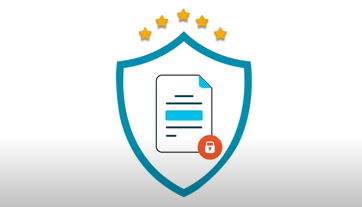Safeguarding intellectual property is crucial for training organizations. DRM software is the solution to protect content & maintain control over distribution.
Why Standards Development Organizations Need to Use DRM Software
Standards Development Organizations (SDOs) play a critical role in shaping the quality, interoperability, safety, and security of products and services worldwide. These organizations, which include well-known entities like ISO, IEEE, and ASTM, create and disseminate guidelines, specifications, and best practices across industries to establish universal standards.
The intellectual property (IP) contained within these standards is the result of extensive research, collaboration, and investment. To ensure the long-term sustainability of their work and protect sensitive information, SDOs increasingly recognize the importance of Digital Rights Management (DRM) software in safeguarding their content.
Protecting Intellectual Property and Maintaining Revenue Streams
SDOs invest a great deal of time and resources into developing, refining, and updating their standards. This work is often conducted by industry experts and involves extensive research, deliberation, and testing. The revenue generated from licensing and distributing these standards is crucial for covering operational costs and funding future initiatives. Unfortunately, due to the digital nature of their publications, standards are vulnerable to unauthorized distribution, which can harm revenue streams and lead to the widespread unlicensed use of intellectual property.
DRM software provides SDOs with a robust solution to prevent unauthorized access, sharing, and reproduction of their content. By implementing Digital Rights Management, these organizations can enforce usage restrictions on their documents, limiting access to licensed users only and preventing piracy. This not only protects the IP itself but also preserves the integrity of the revenue model that fuels ongoing innovation in standards development. Without DRM protections, unauthorized copies could circulate freely, undermining the organization’s efforts to sustain itself financially and compromising the ability to develop future standards.
Ensuring Compliance and Security of Sensitive Information
Standards development often involves sensitive or proprietary information, especially when dealing with emerging technologies or regulations that require strict compliance. Information contained within certain standards may hold value beyond the document itself, such as competitive insights or guidance for meeting regulatory requirements. SDOs need to ensure that this information is not only exclusive to authorized users but also tracked and controlled to avoid unintended dissemination.
DRM software enables SDOs to control access to their documents on a granular level, allowing for permissions-based access, monitoring of document usage, and enforcing compliance with contractual terms. By using DRM, SDOs can provide different levels of access for different stakeholders, ensuring that sensitive information remains confidential and only accessible to those with explicit permissions. The ability to track document access and actions also offers an added layer of security, as it can detect and respond to any attempts at unauthorized access or sharing.
Preventing Document Leakage and Unauthorized Sharing
In today’s digital world, content can easily be copied and distributed with a few clicks. Standards are often distributed electronically, making them susceptible to leakage through unintentional sharing or intentional piracy. For example, an employee of a purchasing organization might unintentionally email a sensitive document to a colleague outside of their organization, or someone with malicious intent could attempt to download and share the document across multiple unauthorized channels. Such instances not only jeopardize the SDO’s content but can also lead to compliance issues and liability risks for the parties involved.
DRM software helps prevent these types of risks by controlling how and where documents can be accessed, viewed, shared, copied, or printed. With DRM, standards documents can be “locked down” to prevent unauthorized sharing through email, file-sharing platforms, or cloud storage. High quality DRM tools also offer dynamic watermarking, which adds an additional deterrent by linking the document to an individual user, making it easier to trace leaks back to their source. This layered security ensures that even if a document leaves the intended network, it remains secure and traceable.
Vitrium: A Solution for Protecting Sensitive Content
One notable Digital Rights Management solution that can address the needs of standards organizations is Vitrium. Vitrium’s DRM software offers powerful encryption, access control, and tracking features that enable SDOs to keep their sensitive content secure while maintaining ease of use for authorized users. With Vitrium, organizations can protect PDFs, documents, images, videos, and audio files with strong encryption, restrict access based on predefined permissions, and monitor document usage in real time. Vitrium’s access management tools allow SDOs to define specific access controls for users or groups, so only authorized stakeholders can view, download, or print the documents.
Vitrium’s DRM solutions also include watermarking capabilities, which help deter unauthorized sharing by making documents traceable to individual users. The platform’s analytics feature provides SDOs with insights into how documents are being used, helping to identify any unusual access patterns that may indicate an unauthorized distribution attempt. This combination of features allows SDOs to maintain tight control over their standards documents, ensuring that they can continue to support the development of high-quality standards without compromising on security or accessibility.
Conclusion
In an era where information is more valuable and vulnerable than ever, Standards Development Organizations must prioritize the protection of their intellectual property. DRM software provides SDOs with the tools they need to safeguard sensitive content, prevent unauthorized sharing, and ensure compliance with licensing agreements. Solutions like Vitrium offer specialized DRM capabilities tailored to the unique needs of standards organizations, enabling them to secure their content, maintain revenue streams, and support the responsible sharing of knowledge across industries. By investing in DRM, SDOs can continue to uphold their mission of advancing industry standards while protecting the intellectual property that underpins their work.
If you’d like to learn more about how Vitrium can help your organization, please don’t hesitate to reach out to our team!





